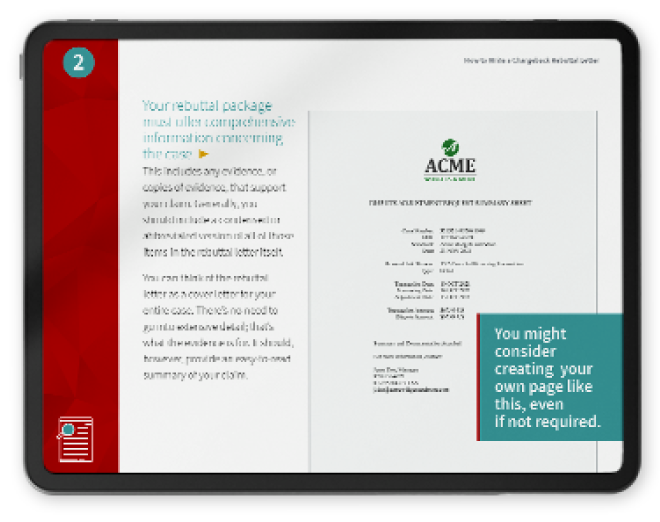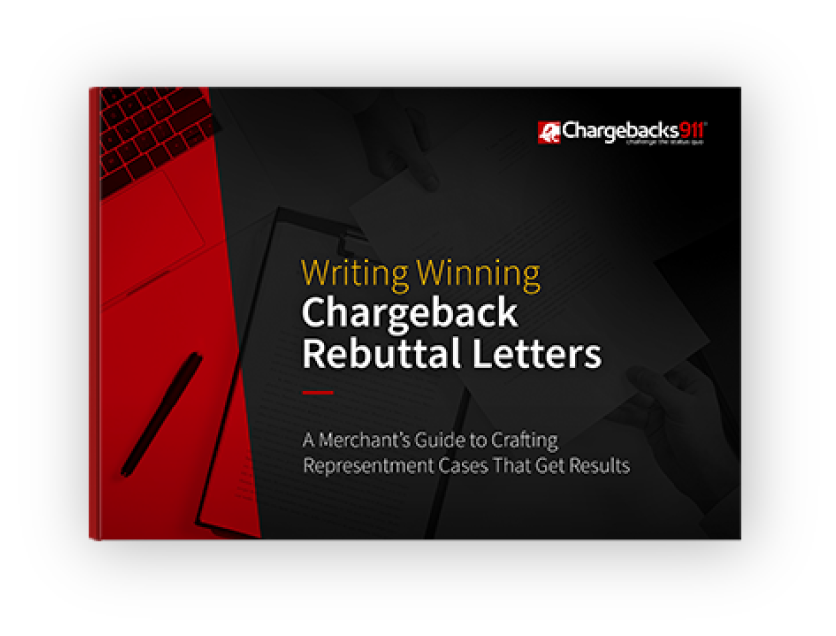7 Common Reasons Why Issuer Declines Happen & How to Respond
Honestly, what’s more frustrating than a declined credit card transaction?
You did the work of acquiring a customer, shepherding them through the decision-making process, and ensuring they make it all the way to checkout. You did the work — now it’s all a waste? Just because you got a bad response from the bank?!
There’s only so much you can do if you get one of those issuer decline codes. After all, you could be on the hook for serious fees and penalties if you try to process payment without authorization.
So, what causes issuer declines? And, how should you respond as a merchant? Can you salvage the sale? In many cases, the answer is yes.
In this article, we’ll explain what issuer declines are and have a look at some of the consequences you may face if you ignore them. We’ll also examine the top seven reasons why issuer declines happen and how you can avoid them.
Recommended reading
- Merchant Identification Numbers | How Do MIDs Work?
- Best Credit Card Processing Companies of 2025 REVEALED
- Why is My Bank Account is Under Investigation?
- What is an Issuing Bank? The Issuer's Role in Payments
- What is an Acquiring Bank? The Acquirer's Role in Payments
- How Debit Payment Processing Works: Costs, Rules, & More
What is an Issuer Decline?
- Issuer Decline
An issuer decline code is a code supplied to a merchant by an issuing bank signifying rejection of a credit card transaction. It means the issuer has placed a stop or hold on a transaction. The specific decline code is meant to give a brief explanation as to why the issuer rejected the purchase.
[noun]/ish • yo͞o • wər • də • klīn/
There are a lot of reasons why an issuer might decline a transaction. Suspected fraud is a common reason, as is insufficient funds in the cardholder’s account. They do this to protect their own customers, and to insulate themselves from the consequences of potential fraud and abuse.
Here’s how the Federal Trade Commission explains it to cardholders on their website:
“Your card may be declined for a number of reasons: the card has expired; you’re over your credit limit; the card issuer sees suspicious activity that could be a sign of fraud; or a hotel, rental car company, or other business placed a block (or hold) on your card for its estimated total of your bill. Some banks or credit unions use blocking — putting a hold on a portion of your available credit on your credit card. That means you have less to use until the block clears. If they block your debit card, your account balance may get low, you may bounce a check, or a recurring payment you authorized may be declined.”
When a Company Declines Your Credit or Debit Card
Transactions that raise one concern or another get flagged as problematic by the issuer, and would get rejected as a result. To explain the decision, the issuer will assign a decline code for each, summarizing the problem and allowing merchants to respond appropriately.
Decline codes are a useful tool to help you understand credit card processing. Sure, they signify that a transaction got rejected by the bank. But, they also indicate which specific issue caused the problem, and can provide insight into how to respond and (hopefully) recover the sale.
Explaining “Soft” & “Hard” Declines
There are two key types of issuer decline responses. So-called “soft” and “hard” declines apply in different situations, and call for different responses.
Like we mentioned above, you can usually retry a transaction after getting a soft decline code. But, you should not retry the transaction after getting a hard decline response. If you get a hard decline response, that means there’s some underlying issue beyond the transaction. The customer will need to contact their bank to resolve the problem before attempting another purchase.
Consequences of Issuer Declines for Merchants
Issuer declines hurt merchants because they result in lost revenue, and can also erode customer goodwill over time.
Declined credit card transactions can cause all sorts of trouble.
The average merchant only recovers one in three declined credit card transactions. Cardholders tend to blame you, the merchant, even though it’s not your fault or your decision to decline the transaction. This hurts your relationship with the customer. It could even drive them to go do business with a competitor.
Another big problem is the threat posed by false declines. The dollar value of the transactions rejected due to false declines comes to about $443 billion every year. This is several times greater than the actual cost of fraud. And, in higher-risk industries like fashion or travel, payment decline rates of 20% or even 30% can be pretty common.
False declines force you to throw away good sales and alienate otherwise loyal customers. In fact, our research shows that four in ten consumers will refuse to buy anything from a merchant after getting falsely rejected by that merchant. This means that every false decline incurs a loss of revenue during the transaction, plus the loss of any potential business with that cardholder in the future.
Fortunately, there are many things you can do to combat criminal fraud and prevent false declines simultaneously. The key is to know the most common reasons why issuers decline transactions, and to take appropriate steps to handle them.
Top 7 Reasons for Issuer Declines & How To Respond
Issuers can decline transactions because of insufficient funds, CVV or AVS mismatches, unusual activity, fraud, or a temporary hold. Issuers will also decline transactions attempted on lost, stolen, or expired cards. Merchants can combat many of these issues by running the card again or by asking the cardholder to use a different payment method.
Merchants might be able to respond to or override issuer declines in some cases. That doesn’t mean you should always do so, though.
If the cardholder can verify incorrect details, or the bank has erroneous information on file that the cardholder can rectify, you can fix the issue and override the decline. But, some declines stem from anti-fraud tools designed to catch suspicious activity. In these instances, it’s wise to err on the side of caution and reject the transaction.
See the full list of card decline codesThere are literally dozens of issuer decline codes in use. However, we can group most of them into seven basic categories. These are the seven reasons why most issuer declines happen:
#1 | Insufficient Funds
If the cardholder lacks the funds to pay for the transaction, there isn’t much you can do to change that. This is a common decline code, accounting for nearly half of all issuer declines by some estimates. The long and short of this? It happens.
The Fix:Offering alternate payment options at checkout can help you recapture purchases that would otherwise be lost to these declines. “Buy now, pay later” arrangements and P2P apps like Venmo are both popular choices. Installment options, for example, can help recover sales and also improve sales for higher-ticket items.
#2 | CVV or AVS Error
The next most common type of declined transaction is information error, like CVV (Card Verification Value) or address mismatches. These typically happen when cardholders enter their payment details incorrectly at checkout.
The Fix:Accidents will happen, so you can never entirely prevent this. You can make it less likely by tokenizing payment details for loyal customers who have purchased from you before, though. Tokenization is a new technology that lets you substitute critical personal information for randomized characters that can be safely stored and recovered at checkout.

#3 | Lost or Stolen Card
Approximately one in ten issuer declines resulted from a lost or stolen card. It should be pretty clear that the declined card will never be accepted, as the cardholder has already been sent a new card. If you try to force the transaction without authorization, you are liable for any resulting fraud activity.
The Fix:There might be a few exceptions to this rule, such as recurring payments that were processed before the card was lost or stolen, for example. However, it’s best to always reject transactions made with cards that have been reported as lost or stolen. Full-stop.
#4 | Unusual Activity
Anything that seems outside of a cardholder’s established purchasing habits can lead to an issuer decline. Everything the cardholder buys is recorded and monitored, and any unusual transactions may be noted and acted upon. Examples can include international transactions, sudden shopping sprees, erratic spending over a certain period, or shopping in suspicious neighborhoods or regions.
The Fix:If the decline code for unusual activity is received, you should ask the cardholder to call their issuing bank and clarify any confusion. If the network approves, you may try the card again.
#5 | Expired Card
This one should be pretty self-explanatory. This is a common occurrence and can be easily explained by the cardholder. They simply forgot to renew their card or failed to notice that the expiration date had been reached.
The Fix:The cardholder may simply have forgotten to switch out a new card for their old one. If they have the new card handy, you can try to run the new card. If not, you may be able to recapture the sale by offering additional payment options or asking for a different card, just like with the insufficient funds decline code.
#6 | Temporary Hold
This one is a bit tricky. This is caused by someone placing a certain amount of money on a temporary hold on the cardholder’s account, thereby causing the seller to reach their credit limit without realizing it. Hotels, car rental companies, and entertainment vendors commonly use temporary holds.
The Fix:If the cardholder is over their credit limit, they will not be able to complete the transaction. The only options are for the cardholder to contact their bank and ask them to extend their credit line, or for you to ask for another card or offer additional payment methods.
#7 | Fraud
Lastly, we come to the most serious reason for issuer declined transactions: fraud. If an issuer denies a transaction due to suspected fraudulent activity, they’ll usually ask you to take some action to stop the scammer. If so, the issuer decline code will give you instructions explaining to how you should proceed (more on this in a minute).
The Fix:The only appropriate response required to combat fraudulent activity is to contact the bank associated with the card for clarification. You should flatly refuse to process any transactions with the card in question.
Fraud-Related Issuer Decline Codes: How to Respond
Like we talked about above, if the issuer will usually include a code meant to tell you what you should do next if they flag a transaction as fraud. It’s not always enough to just reject the buyer; you might have to hold the credit card or even call the cops.
The “fraud”-related decline codes include:
The card issuer has already flagged the account for fraud. The issuer requests that you confiscate the card in question, and not return it to the customer.
The card has been reported lost or stolen, and the issuer has flagged it for fraud. The issuer requests that you confiscate the card in question, and not return it to the customer.
The owner has reported the card stolen, and the issuing bank has flagged it for fraud. The issuer requests that you confiscate the card in question, and not return it to the customer.
The card has been reported lost or stolen, and the issuer has flagged it for fraud. You are not required to confiscate the card, though.
The transaction failed on PayPal or Google Pay attempted authentication.
Card has been flagged as suspicious, and transactions will be denied.
Preventing Fraud and False Declines
A lot of issuer declines are outside of your control. So, you’ll want to make sure you’re maximizing the number of customers you’re able to sell to. This means eliminating false declines whenever possible.
You can take internal steps to manage declines in your operations. We recommend that you:
For any of the above solutions to work, you have to be prepared to conduct in-depth data analysis. You need to understand how to access and interpret that information, and have a solid strategy in place to put your strategy into practice. As always, the more information you have, the better armed you are against fraud and false declines.
The wisest move might be to partner with the right service provider to help you mitigate both problems as part of a broader strategy. Chargebacks911® combines advanced, proprietary machine learning with human expertise to develop customized fraud-prevention strategies, backed by a 100% ROI guarantee. Learn more today about how much you could save with Chargebacks911.
FAQs
Why is my debit card issuer declining my payment?
Your debit card issuer could be declining your payment for several reasons, such as insufficient funds or suspicious activity flagged as potential fraud. It's also possible that there's an issue with the card itself, such as it being expired or damaged, so contacting your bank directly for clarification is advisable.
How do I stop card issuer rejection?
To stop card issuer rejections, ensure that your card information is up-to-date and promptly report any lost or stolen cards to your bank. Additionally, monitor your account regularly for any suspicious activity and notify your bank right away to avoid potential fraud flags.
What does issuer decline mean?
“Issuer decline” means that the bank that issued your payment card has rejected the transaction, usually due to reasons like insufficient funds, potential fraud, or expired cards. It signifies that the bank is unable or unwilling to approve the payment request at that time.
How do I fix my bank declined payment?
To fix a bank-declined payment, confirm that you have sufficient funds and verify that your card information is current. If the problem persists, contact your bank directly to understand the reason for the decline and take the necessary steps to resolve it.
Why is my credit card declined no such issuer?
A “no such issuer” error indicates that the credit card number entered does not match any card issued by a bank or financial institution. This could be due to entering an incorrect card number or using a card that is no longer active or recognized.
What does “issuer” mean in payments?
The issuer, issuing bank, or card issuer, is the financial institution that provides (or “issues”) credit or debit cards to cardholders.
Why would the bank reject payments?
Issuers decline transactions for a variety of reasons, including credit limit overages, suspected fraud, invalid or expired card information, or authentication errors.
Who is my card issuer?
You can identify your card issuer by examining the front of your payment card, which should clearly feature your issuer’s logo.
What is an “Issuer Declined MCC” error?
An “Issuer Declined MCC” error appears when an issuer rejects a transaction because card restrictions prohibit certain merchant category codes. For example, companies providing corporate cards may ban employees from making certain types of non-business-related purchases. If a prohibited transaction is attempted, it will be declined by the issuer.















